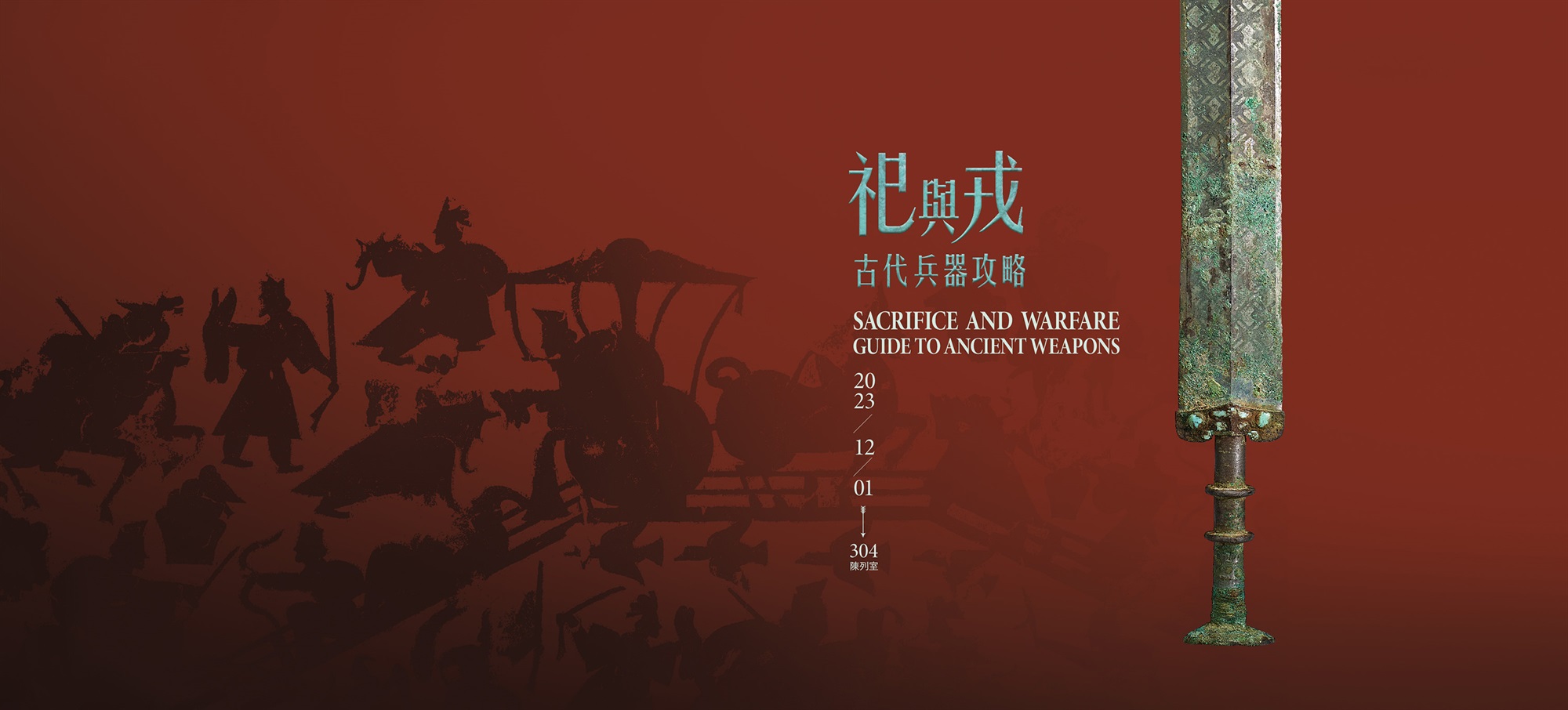Tempering Excellent Bronze
The periods of the Spring and Autumn and Warring States, characterized by frequent warfare, marked the heyday of bronze weapon development. With the maturation of bronze casting techniques, weapons like dagger-axes, spears, and halberds evolved to their utmost in pursuit of lethality. Meanwhile, in response to the rise of various forms of warfare, different types of weapons emerged. First, bronze swords joined the ranks of dagger-axes, spears and halberds alongside the emergence of horsemen and infantry, becoming one member of the fundamental weaponry assemblage. Second, building upon the foundation of the bow, powerful crossbows were developed and became one of the most potent weapons for infantry to counter horseback warriors.
-
Bronze sword with turquoise inlay Late Spring and Autumn period to Warring States period, 570-376 B
Length55.6cm
At the turn of the Spring and Autumn period and Warring States period, Wu and Yue, which were at their peaks, were famed for their sword making. For instance, when listing the famous products of the various states, Kao Gong Ji states “Zheng is renowned for its sabers, Song for its axes, Lu for its scimitars, and Wu and Yue for their swords.”
Wu and Yue’s swords were mainly made of solid cast handles in one piece . The surfaces of their weapons often had dark, diamond-shaped patterns processed by special techniques, making them markedly unique among other states.
-
Bronze helmet with knob decoration Late Western Zhou dynasty to Spring and Autumn period, Uppe
Length23.7cm Width21cm
Thickness18.5cmProtective gears during the Bronze Age in China were mostly made of leather such as leather armor and leather shields. Only parts of the armor and shields were embellished with bronze pieces as decorations and to enhance their defensive strength. At this time, helmets were one of the few protective gears made entirely out of bronze. In terms of shape, this helmet more closely resembles bronze helmets worn by people in the Eurasian Steppe. For example, similar artifacts have been unearthed from the Upper Xiajiadian culture in Chifeng, Inner Mongolia.
-
Bronze dagger-axe with inscription “hsuan min” Late Spring and Autumn period, ca. 570-476 BCE
Length14.0cm Width7.4cm
Hole diameter2.25cmThe main components of ancient bronze weapons were copper, tin, and lead. During the Shang and Zhou dynasties, bronzes were initially referred to as “gold.” However, by the Spring and Autumn period and Warring States period, the different raw materials of bronzes began to be called differently in inscriptions. Xuan-liu was one of such raw materials. Nevertheless, regarding whether xuan-liu was copper, tin, or lead, no consensuses have yet been reached. Because xuan is black in color, it is more likely to be tin, lead, or tin-lead alloy.


